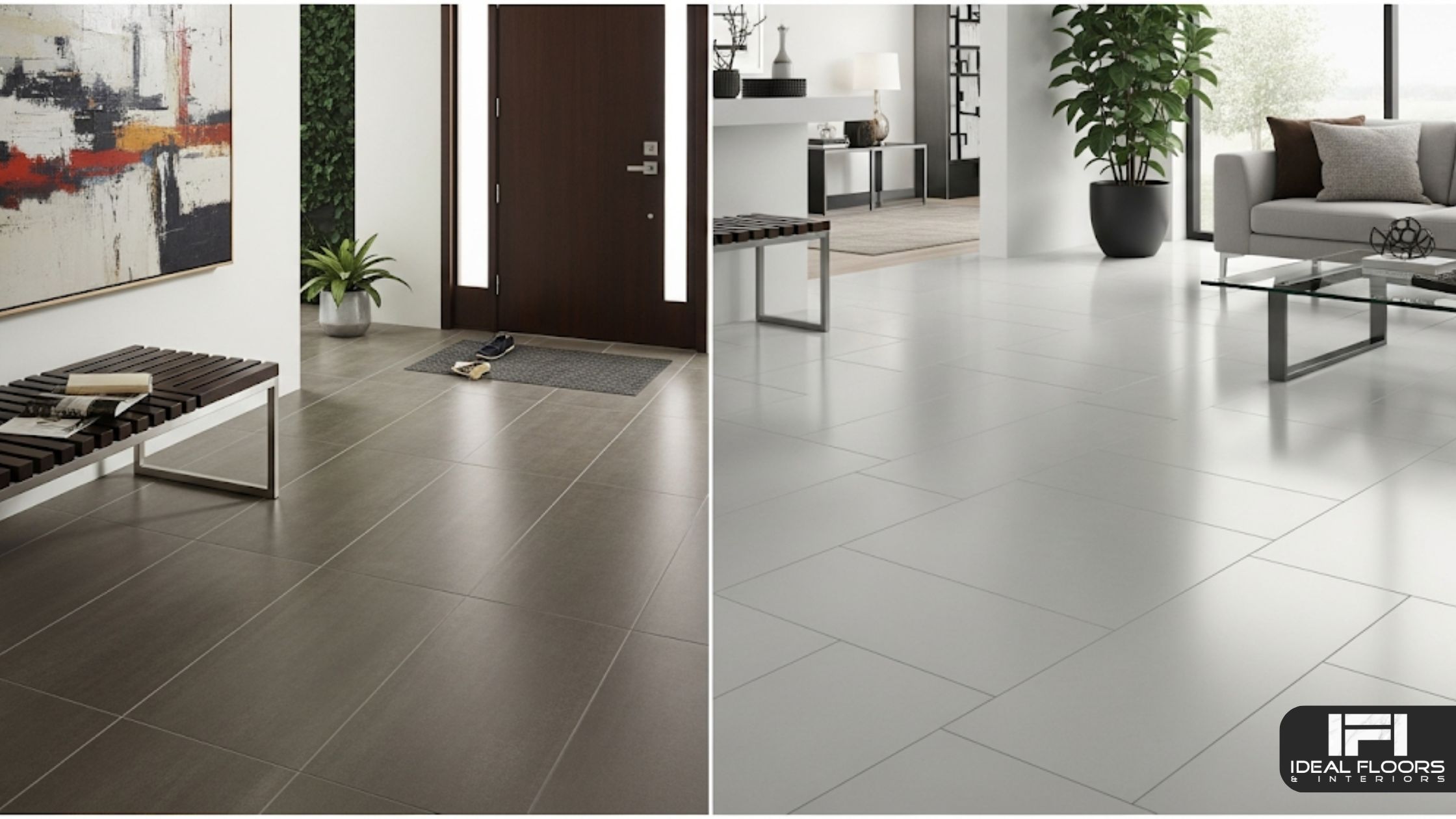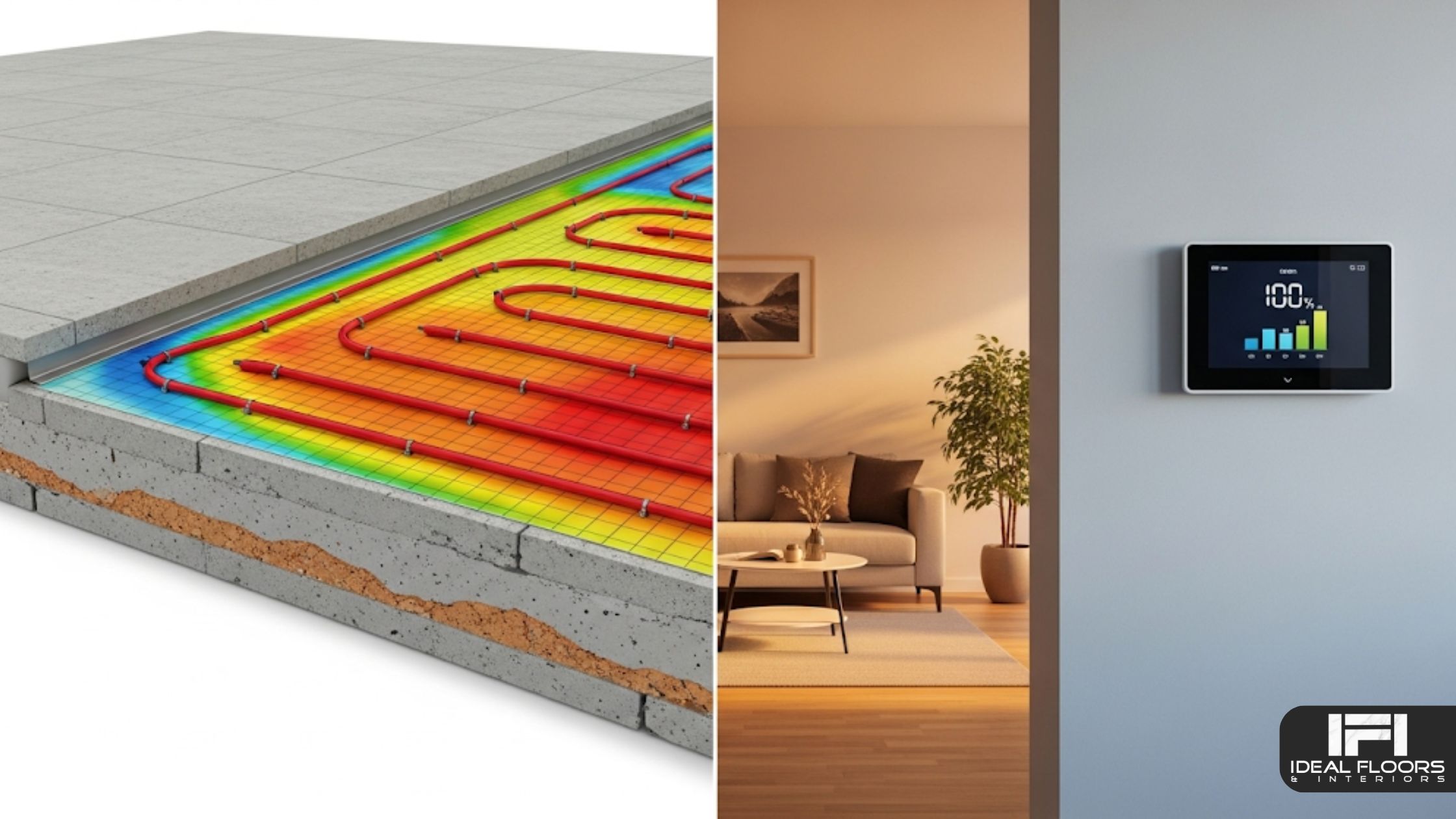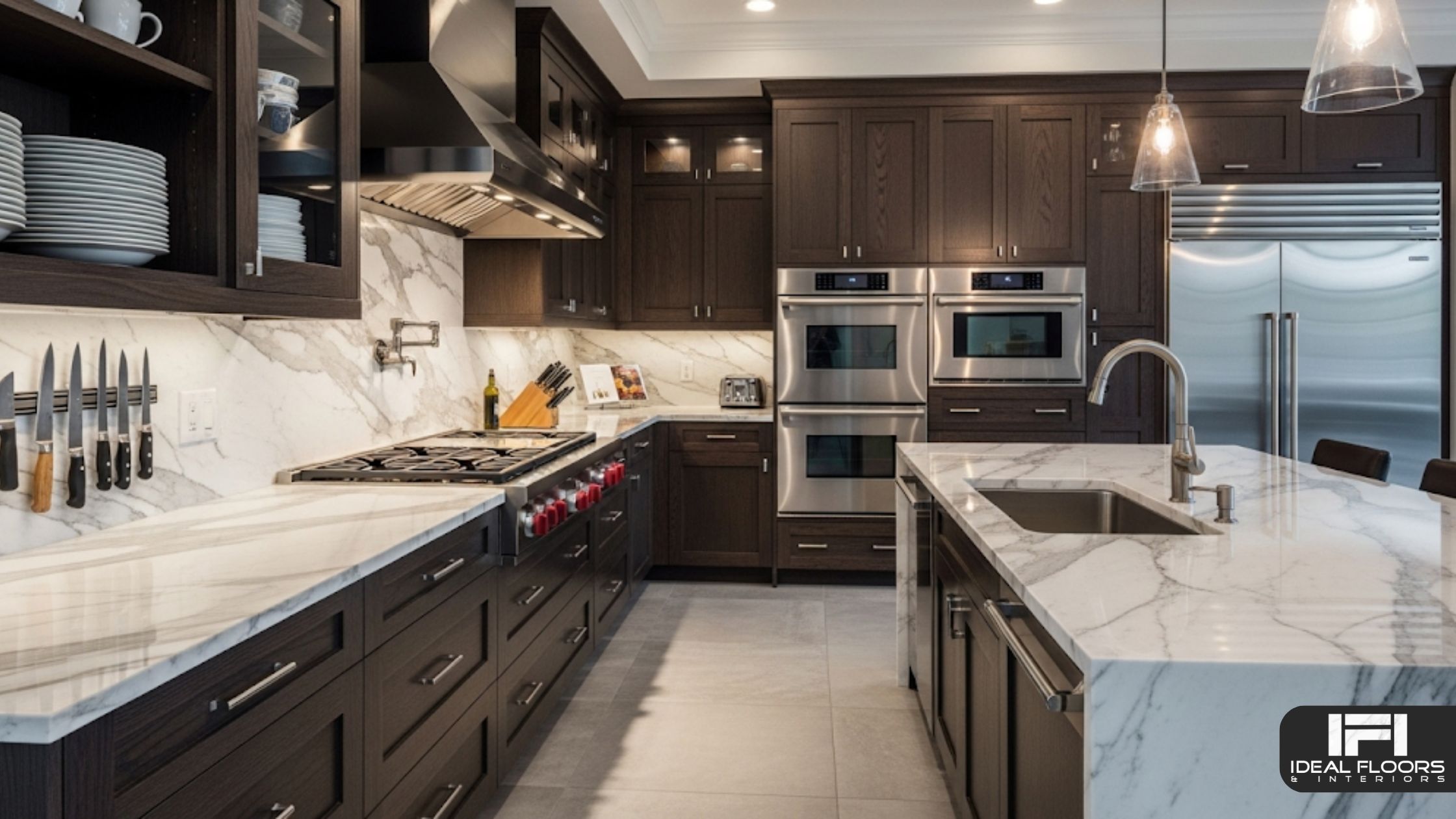In Alpharetta, GA, homeowners seeking stunning and long-lasting surfaces often turn to Tile Installation Alpharetta GA professionals for expert advice and execution. With a decade of experience in semantic SEO content strategy, this overview examines the top three industry blogs and distills their insights into a comprehensive guide on tile types suited for local residences. It explores porcelain, ceramic, and natural stone flooring options as well as emerging trends in patterns, sizes, and performance specifications. Through a third-person lens, it offers clear direction for residents aiming to elevate their living spaces with enduring style and functionality.
What type of tile should homeowners choose for spaces prone to moisture in Alpharetta, GA?
When assessing moisture-prone areas like bathrooms, kitchens, and laundry rooms, local experts recommend water-resistant porcelain or sealed natural stone. Porcelain tile resists water penetration thanks to its dense body and low absorption rate, making it ideal for showers and wet areas. Sealed travertine or granite can lend organic warmth while still repelling moisture when properly treated. Ceramic tile with a high-quality glaze also performs admirably in damp conditions, though it typically demands re-grouting more often in high-traffic zones.
Most tile selections hinge on balancing aesthetics, durability, and maintenance demands. Porcelain offers a spectrum of finishes and can convincingly mimic wood and stone grains. Ceramic remains budget-friendly and versatile, but its surface hardness varies with glaze thickness. Natural stone carries unique veining and texture, offering a luxurious feel at a premium price and requiring periodic sealing to protect against stains.
Porcelain tile: Durability meets design versatility

Porcelain tile stands out for its exceptional hardness and minimal water absorption, characteristics that local contractors value for Alpharetta homes. Fired at higher kiln temperatures than standard ceramic, porcelain yields uniform coloration and increased resistance to wear. This material accommodates indoor and outdoor installations, seamlessly connecting patios to interior living rooms without a visible threshold.
Advancements in digital printing allow porcelain slabs to emulate marble, slate, and even wood textures with uncanny realism. These large-format tiles reduce grout lines, creating an expansive aesthetic in open-concept kitchens and great rooms. Homeowners benefit from minimal maintenance, as porcelain repels most stains and requires only routine sweeping and damp mopping.
Porcelain tile patterns and finishes
Modern porcelain tiles arrive in matte, polished, and textured surfaces. Matte finishes camouflage smudges and suit rustic or industrial schemes, while polished porcelain lends a sleek, reflective quality that brightens compact powder rooms. Textured variants enhance safety in entryways by improving slip resistance underfoot. Coupled with herringbone or chevron patterns, porcelain offers both practical performance and design flair.
Ceramic tile: Affordable adaptability for every room
Ceramic tile remains a popular choice for Alpharetta residences due to its cost-effective production and expansive palette of colors, shapes, and sizes. Made from clay and glaze, ceramic tiles fire at lower temperatures, resulting in slightly higher porosity than porcelain. As a result, ceramic often serves best in low-traffic areas or spaces where water exposure is limited.
Despite this, ceramic brings boundless design possibilities. Subway-style rectangular tiles continue to trend in kitchen backsplashes and bathroom walls. Mosaic inserts offer bespoke accents in entryways or stair risers. Ceramic’s lightweight profile simplifies DIY and professional installations alike, reducing shipping costs and easing handling on second-floor locations.
Natural stone flooring: Timeless character and investment value

Natural stone flooring, including travertine, granite, marble, and slate, brings immeasurable character to Alpharetta interiors. Each slab carries geological history in its unique veining and tonal variations, making no two installations identical. Homeowners seeking a high-end aesthetic often gravitate toward marble’s luminous sheen or slate’s rich texture for foyer statements.
Travertine offers warm neutrals and soft tumbled edges for traditional settings, while granite stands up exceptionally well in kitchens due to its scratch-resistant surface. Natural stone demands vigilant sealing and occasional professional honed refinishing to preserve luster and prevent etching. Despite these maintenance demands, many local design experts affirm that properly cared for stone can last decades, often enhancing property resale value.
Comparing tile attributes
| Tile Type | Durability | Water Resistance | Cost per sq. ft. | Maintenance Needs |
| Porcelain | Very High | Excellent | $3.00 – $10.00 | Low – occasional cleaning |
| Ceramic | Moderate | Good (if glazed) | $1.00 – $5.00 | Medium – grout resealing |
| Natural Stone | High | Variable (with sealant) | $6.00 – $15.00+ | High – sealing and polishing |
How do tile colors and sizes impact home design in Alpharetta, GA?
Selecting the right tile color and size plays a pivotal role in shaping a room’s perceived scale and ambiance. Light-colored large-format tiles can visually expand compact kitchens, while darker and smaller modular patterns lend intimacy and texture to bedrooms and study areas. Neutral greys and beiges function as adaptable backdrops for evolving décor, whereas bold blues and greens make statement floors or accent walls.
Color judgement hinges on surrounding materials, too. A light marble-look porcelain in a sunlit breakfast nook pairs effortlessly with white cabinetry and stainless steel appliances. In contrast, warm brown wood-look ceramic blends with live-edge counters and warm-tone metals for a cohesive farmhouse vibe. Local pros encourage clients to request tile samples under their own lighting conditions, as northwest-facing spaces may appear cooler than southeast-facing rooms.
Tile sizes and formats: From mosaics to planks
Versatility in tile dimensions empowers distinctive layouts. Mosaic tiles measuring under two inches suit intricate borders and niche accents. Standard 12×12 ceramic tiles remain classics for straightforward installations, while large 24×48 porcelain slabs create near-seamless expanses. Plank-style formats, available in floor and wall tiles, deliver the aesthetic of hardwood without concerns over moisture or scratches.
Plank tile installations often employ staggered joints that replicate traditional wood patterns. Herringbone and chevron deployments add motion and drama, especially in living rooms or bathrooms. These specialty patterns call for skilled setting and precise grout spacing, ensuring alignment and an uncompromised finish.
Why professional installation matters
While DIY tile projects can succeed for small backsplash tasks, most homeowners in Alpharetta benefit from certified installers for extensive floor setups. Professional tilers assess substrate flatness, moisture barriers, and curing conditions before commencing the layout. Correct trowel selection, mortar mixing ratios, and grout timing directly impact tile adhesion and long-term stability.
Tile Installation Alpharetta GA specialists streamline complex angles and threshold transitions, ensuring grout line continuity and perpendicular alignments. Their expertise minimizes the risk of lippage—uneven tile edges that create trip hazards—and accelerates project timelines through efficient scheduling and crew coordination.
Substrate preparation and underlayment essentials
A level, stable underlayment constitutes the foundation of any durable tile floor. Concrete subfloors require moisture-mitigation membranes or epoxy sealers in humid basements. Wood-frame installations depend on cement backer boards or thin-set underlayments to prevent flexing and cracking. Local building codes may also mandate specific vapor retarders in slab-on-grade applications.
Professional crews employ laser-level systems to verify flatness within industry tolerances—typically 1/4-inch over ten feet. This precision ensures large-format tiles lie flush and subtle textures remain consistent underfoot. Proper preparation reduces callbacks and upholds manufacturer warranties.
Grout selection: Balancing form and function
Grout performs dual roles in tile assemblies: filling joints to secure tiles and contributing to visual cohesion. Unsanded grout works well for narrow gaps under 1/8 inch, as found in polished mosaic settings. Sanded grout resists shrinkage and cracking in wider joints, typical with 12×24 or 24×48 tile layouts. Epoxy grouts offer superior stain resistance and durability, especially for kitchens or commercial spaces, though they require quicker application and more intricate cleanup.
Color-matched grout can vanish against a homogeneous tile field, whereas contrasting grout accentuates geometric patterns and grid effects. Homeowners should test grout colors on a spare tile sample to observe hue shifts under room lighting before final selection.
Integrating accent tiles and borders
Accent tiles and decorative trims transform a straightforward tile field into bespoke focal points. Moroccan-inspired zellige or patterned encaustic-look porcelain inserts add artisanal flair to kitchen backsplash runs. Metal-edged listellos define transitions between tile types or demarcate shower niches elegantly. Border tiles featuring subtle relief motifs create picture-frame effects around bathroom floors.
Integrating decorative elements requires early planning in the tile layout, as offsetting border pieces after primary field installation can lead to disproportionate cuts and unbalanced spacing. Experienced tile professionals draft detailed layout drawings and full-scale mockups to validate pattern alignment before adhesive application.
Energy efficiency and underfloor heating compatibility

Alpharetta’s milder winters lend themselves well to underfloor radiant heating beneath tile floors. Both porcelain and ceramic transmit heat effectively, warming heel and toe during cooler months. Natural stone, with its high thermal mass, retains heat longer but may feel cold initially until the system activates. Local HVAC experts advise pairing electric or hydronic radiant systems with insulation boards to maximize efficiency and reduce ramp-up times.
Radiant-ready substrates ensure uniform heat distribution and minimize stress on the tile assembly. Proper spacing of heating cables or tubing and adherence to manufacturer spacing guidelines prevent hotspots and accommodate anticipated expansion cycles.
Environmental considerations and certifications
Eco-conscious homeowners often look for GREENGUARD or LEED-approved tiles made from recycled content or harvested responsibly. Many porcelain manufacturers now produce tiles with post-industrial or post-consumer recycled material, lowering embodied energy. Natural stone quarries increasingly adhere to ethical extraction practices, though transport emissions remain a factor for materials sourced internationally.
Life-cycle assessments factor into long-term tile selection, as durable tile floors that last decades can outperform short-lived vinyl alternatives in sustainability metrics. Local recycling programs accept ceramic and porcelain scraps for aggregate reuse, further reducing landfill impact.
Budgeting for tile projects in Alpharetta, GA
Residential tile projects in Alpharetta range broadly depending on material choice and complexity. Ceramic field tile installations may start around $5 per square foot installed, including basic grout and trim. Mid-range porcelain projects typically fall between $8 and $15 per square foot once specialized patterns, large formats, or waterproof membranes are factored in. Natural stone floors can exceed $20 per square foot when including honed finishes, bullnose edges, and professional sealing.
Major variables include demolition scope, substrate repair, and custom edge treatments. Homeowners are advised to collect three detailed estimates from reputable Tile Installation Alpharetta GA contractors before finalizing budgets, factoring in a 10–15% contingency for unforeseen site conditions.
Maintenance tips for long-lasting tile surfaces
Routine care preserves tile aesthetics and performance. Regular sweeping or vacuuming removes abrasive grit that can dull surface finishes over time. Warm water and pH-neutral cleaners safeguard glazes and sealants without leaving residue. Avoid harsh acids or high-alkaline detergents that can etch natural stone or degrade grout.
Promptly addressing grout discoloration—by scrubbing with a grout brush and mild cleaner—prevents staining. Annual inspections for tile movement or grout cracking allow early intervention, avoiding water infiltration that can damage subfloors and promote mold growth.
Harnessing local expertise for seamless results
Alpharetta’s suburban neighborhoods reflect a blend of historic charm and modern new builds, requiring installers familiar with diverse architectural styles. Contractors who understand local building codes, humidity considerations, and design preferences can recommend tile solutions that endure both style shifts and environmental stressors. Licensed professionals carry liability insurance and often extend manufacturer warranties, offering peace of mind that DIY efforts can’t match.
Pre-construction consultations evaluate room function, traffic patterns, and desired maintenance regimes. By partnering with certified tile specialists, homeowners streamline procurement, scheduling, and quality control—avoiding the pitfalls of mismatched materials or installation delays.
How to choose tile flooring design that complements home aesthetics
Designing a tile installation involves aligning the homeowner’s vision with the home’s structural features. Open-plan family rooms benefit from large-format neutral tiles that foster continuity from living areas to kitchens. Contrasting border treatments in formal dining rooms define seating zones while preserving a cohesive flooring palette. In bathrooms, vertical subway tiles paired with mosaic accent strips enhance perceived ceiling height.
Local interior designers often collaborate with tile installers during early planning, specifying grout line widths, edge profiles, and tile color families that harmonize with countertop materials and cabinetry finishes. This integrated approach minimizes costly plan revisions and ensures each material layer reinforces the overall design concept.
Integrating smart home features with tile installations
Cutting-edge Alpharetta residences incorporate floor-mounted occupancy sensors and radiant heating controls beneath tile. Wireless thermostats regulate underfloor systems for personalized comfort in bathrooms and master suites. Sensors embedded within tile adhesives can monitor moisture levels in showers, alerting homeowners to potential leaks before damage escalates.
Future-ready homes may accommodate subfloor lighting channels under translucent glass or resin tiles, turning corridors into luminous gallery pathways. Integrators collaborate with tile installers to maintain wiring pathways and preserve tile integrity during access to electrical conduits.
Achieving ADA compliance with tile surfaces
Universal design principles call for slip-resistant tile selections on ramps and bathrooms to meet ADA guidelines. Textured porcelain pavers with matte finishes reduce fall risk in transitional areas. Contrasting border tiles help vision-impaired residents detect level changes. Mortar bed slopes and grout joint widths adhere to accessibility standards while preserving seamless aesthetics.
Accessible tile installations require meticulous slope measurements—no more than 1:12 for ramps—and flush transitions to adjoining floor materials. Experienced installers revise traditional trowel patterns to avoid inadvertent pitch changes that could pose tripping hazards.
Coordinating tile colors with cabinetry and countertops

In kitchens and baths, tile palettes tie together cabinetry hues and quartz or granite countertops. Cool-toned porcelain resembling Carrara marble complements white shaker cabinetry and chrome fixtures. Warm-beige travertine pairs elegantly with maple cabinets and oil-rubbed bronze hardware. Accent tile mosaics featuring interwoven stone and glass fragments can echo countertop flecks, creating visual continuity.
Design professionals recommend high-resolution photos and physical material samples during tile selection meetings. Natural light and artificial lamp tests reveal subtle undertones that online images may not convey, ensuring color harmony in actual installation environments.
Incorporating eco-friendly grout solutions
Low-VOC grout formulations contribute to healthier indoor air quality by reducing chemical off-gassing during and after installation. Antimicrobial grout additives inhibit mold and mildew in humid areas, extending the lifespan of tile surfaces. Bio-based sealants derived from plant oils offer sealing performance comparable to petroleum-based products, aligning with sustainable home goals.
Manufacturers now label green-certified grout and sealant products with environmental declarations, enabling homeowners to meet local green building incentive requirements.
Specialized tile choices for outdoor living spaces
Alpharetta’s temperate climate invites outdoor kitchens, patios, and pool decks clad in porcelain pavers engineered for freeze-thaw resistance. These large-format pavers anchor alfresco living zones while seamlessly continuing interior flooring patterns. Natural slate and limestone pavers lend a rustic touch to garden walkways and firepit areas.
Outdoor tile selection prioritizes slip resistance, fade resistance, and frost tolerance. Unglazed or heavily textured finishes perform best under direct sun exposure and unpredictable Georgia rainfall.
Project planning: lead times and ordering considerations
Popular porcelain and ceramic lines may have 4–6 week lead times from overseas manufacturing. Natural stone orders can extend further if custom finishes and edge profiles are required. Early selection finalization and deposit payments secure production slots and delivery dates. Local warehouses often stock trending neutral and wood-look tile ranges for quick turnaround on smaller renovations.
Installers coordinate material arrival with demolition schedules to avoid on-site congestion. Dedicated storage areas maintain tile flatness and prevent damage prior to installation day.
Long-term value: tile’s role in home resale
Real estate experts agree that updated tile floors and baths contribute significantly to a home’s appeal on the market. Neutral travertine or porcelain plank flooring resonates with broad buyer demographics, while bespoke encaustic-look patterns showcase owner craftsmanship. Durable tile that maintains its finish despite years of traffic signals quality to prospective purchasers.
Well-documented warranties and maintenance records reassure buyers, yielding higher offers and shorter listing times. Many Alpharetta realtors cite tile upgrades as among the top three renovation projects for ROI in the local market.
Conclusion
After evaluating porcelain tile’s durability, ceramic tile’s affordability, and natural stone flooring’s timeless elegance, homeowners in Alpharetta, GA, can select the ideal surface for every space. Whether updating a master bath with water-resistant porcelain or framing a dining room floor with honed limestone, local expertise ensures flawless execution. For residents ready to transform their homes with premium finishes, professional Tile Installation Alpharetta GA services deliver lasting beauty and performance.
Emphasizing craftsmanship, material knowledge, and design acumen, Ideal Floors & Interiors stands ready to guide Alpharetta homeowners through every stage—from tile selection to meticulous installation—backed by a commitment to quality and sustainability.
Frequently Asked Questions
What type of tile should I choose for my home?
Homeowners should match tile properties to the intended room function: porcelain or sealed natural stone for moisture-prone areas, ceramic for low-traffic zones, and specialty mosaic or decorative tiles for accent features.
How do I choose the right tile color for my home?
Select colors that harmonize with existing cabinetry, countertops, and lighting. Neutral palettes offer versatility, while statement hues or patterns can define focal points in transitional spaces.
Is tile a good choice for increasing home value?
Durable, updated tile floors and baths often generate strong returns on investment by signaling quality and low-maintenance living to prospective buyers.
Should tiling be done on a base?
Yes. A solid, level underlayment—such as cement backer board or waterproof membrane—is critical to prevent flexing, cracking, and moisture intrusion beneath tile installations.
How do I choose a tile flooring design?
Consult design professionals to align tile formats, joint spacing, and grout color with the home’s architectural style. Pattern selection—from subway to herringbone—should complement room proportions and desired visual flow.
